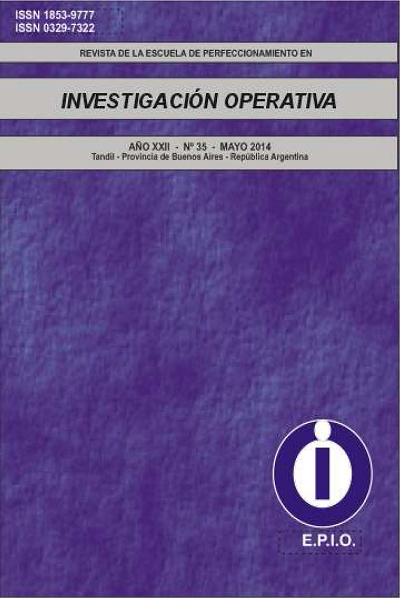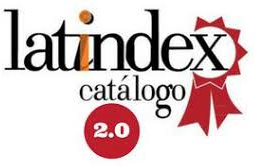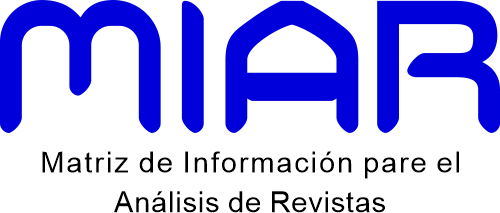Una aproximación a la aplicación de métodos matemáticos en el control de gestión por indicadores
Keywords:
indicators, management, scoreboard, balanced scorecard, knowledge management, intelligent organizationsAbstract
Throughout any indicator creating process, there is a tendency to devote most time to the search of what we need to measure, what we want to measure, or else, what we are being asked to measure. Part of this time is devoted to identifying the availability of the data needed to build those indicators, and a minor part of that time in analyzing the need for developing new data bases of the unavailable data.
Countless successful cases showing the application of technologies for indicator management have been developed for many years. The focus on these efforts has pushed into the background a deeper indicator-based analysis offering more information about what is going on within an organization.
In the present work, we discuss the need for applying mathematical methods, present an approach as to which those methods should be, and how such methods should be used at the different stages of the indicator defining process (formalized as variables) in such a way that we can explore what direction would take us the fact that the variables take certain values, where the variables lead to, and where we lead to if they so continue.
Downloads
References
AHERN, D.; CLOUSE, A.; TURNER, R. (2004): “CMMI DISTILLED: A PRACTICAL INTRODUCTION TO INTEGRATED PROCESS IMPROVEMENT”. Pearson Education Inc.
BALLVÉ, A. (2000): “TABLERO DE CONTROL”. Ed. Macchi. Buenos Aires.
BLUMENBERG, S.; HINZ, D.; GOETHE, J. (2006): “ENHANCING THE PROGNOSTIC POWER OF IT BALANCED SCORECARDS WITH BAYESIAN BELIEF NETWORKS”. University, Frankfurt, Germany. Proceedings of the 39th Hawaii International Conference on System Sciences. 0-7695-2507-5/06 (c) 2006 IEEE.
CHAN, S.; IP, W. (2010): “A SCORECARD-MARKOV MODEL FOR NEW PRODUCT SCREENING DECISIONS”. Department of Industrial and Systems Engineering, The Hong Kong Polytechnic University. Industrial Management & Data Systems Vol. 110 No. 7, pp. 971-992. (c) Emerald Group Publishing Limited.
ILLESCAS, G.; TRIPODI, G.; BARATÇABAL, L.; LASTIRI, R. (2006): “ORGANIZACIONES INTELIGENTES - HERRAMIENTAS DINÁMICAS DE GESTIÓN”. VIII WICC (Workshop de Investigadores en Ciencias de la Computación). Universidad Nacional de Morón, Argentina.
ILLESCAS, G.; TRIPODI, G.; BARATÇABAL, L.; LASTIRI, R. (2007): “ORGANIZACIONES INTELIGENTES - INDICADORES DINÁMICOS”. XVIII EPIO (Escuela de Perfeccionamiento en Investigación Operativa). Facultad de Ingeniería - Universidad Nacional de Mar del Plata, Argentina.
KAPLAN, R.; NORTON, D. (1996): “THE BALANCED SCORECARD: TRANSLATING STRATEGY INTO ACTION”. Harvard Business Review.
KÖPPEN, V.; ALLGEIER, M.; LENZ, H. (2007): “BALANCED SCORECARD SIMULATOR — A TOOL FOR STOCHASTIC BUSINESS FIGURES”. Studies in Classification, Data Analysis, and Knowledge Organization. Advances in Data Analysis, Part VI, Pages 457-464.
MUNICIPIO DE PEREIRA (2011): “PROPUESTA DE TABLERO DE MANDO PARA EL MONITOREO DE LA EJECUCIÓN DE LA PROPUESTA DE PROSPECTIVA PEREIRA 2032”. Universidad externado de Colombia, Facultad de Administración de Empresas, Dirección de Desarrollo Gerencial. Bogotá, D.C. Disponible en: http://portal.pereira.gov.co:7778/PUBLICADOR/PROSPECTIVA/ESCENARIOS.pdf
OJEDA, M.; PALERMO, M. (2007): “NORMAS GENERALES PARA EL SISTEMA DE INFORMACION MEDIANTE INDICADORES SOBRE: COMPETITIVIDAD, PRODUCTIVIDAD Y CALIDAD EN SALUD”. Trabajo final integrador, Diplomatura en auditoria médica. Instituto Universitario Isalud, Buenos Aires, Argentina. Disponible en: http://auditoriamedica.files.wordpress.com/2009/01/normas_generales.pdf
Downloads
Published
Issue
Section
License
Atribución — Usted debe dar crédito de manera adecuada, brindar un enlace a la licencia, e indicar si se han realizado cambios. Puede hacerlo en cualquier forma razonable, pero no de forma tal que sugiera que usted o su uso tienen el apoyo de la licenciante.
NoComercial — Usted no puede hacer uso del material con propósitos comerciales.
CompartirIgual — Si remezcla, transforma o crea a partir del material, debe distribuir su contribución bajo la misma licencia del original.







